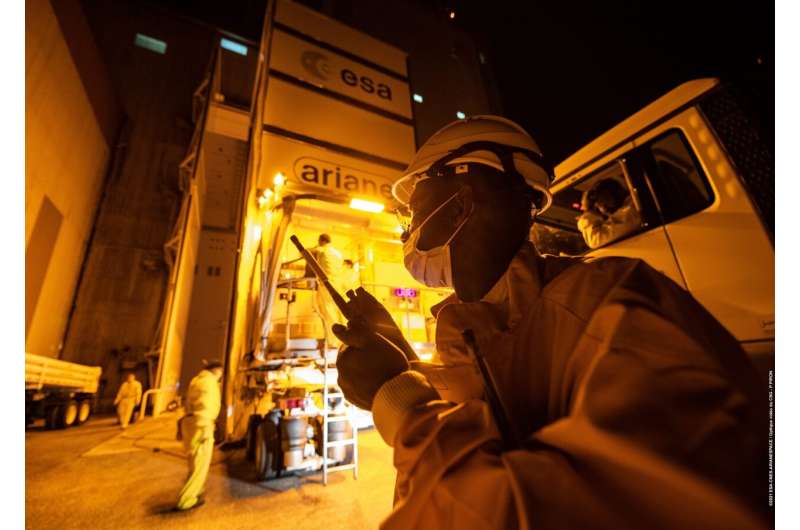Blue Origin poised to send NFL, TV's Strahan into space
Saturday, 11 December 2021 10:34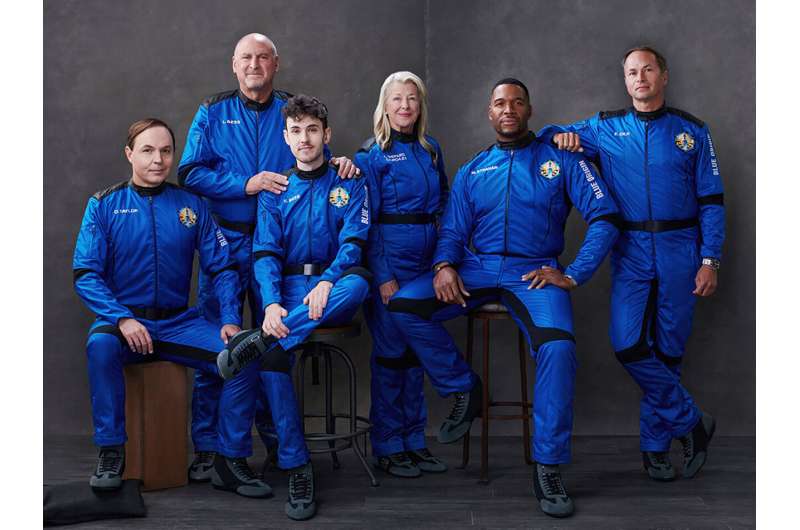
Jeff Bezos' rocket company, Blue Origin, is about to send former NFL great Michael Strahan into space—with a football.
The co-host of ABC's "Good Morning America" and former New York Giant prepped Saturday for a morning blastoff from West Texas. Five others will join him on the 10-minute flight, including the eldest daughter of the first American in space, Alan Shepard. Blue Origin's New Shepard rocket is named for him.
FAA: No more commercial astronaut wings, too many launching
Saturday, 11 December 2021 06:10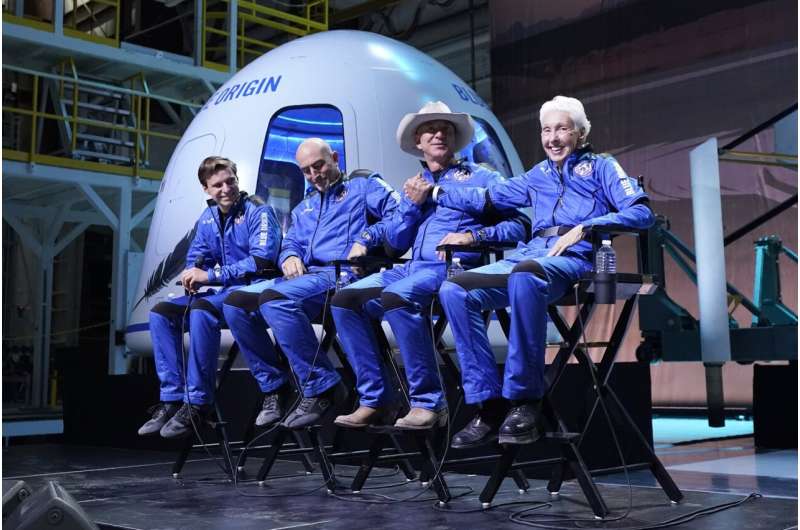
Daughter of first American astronaut to launch on Blue Origin flight
Saturday, 11 December 2021 06:05
Jeff Bezos' Blue Origin is set to blast its third private crew to space on Saturday, this time including the daughter of the first American astronaut.
The spaceflight will last roughly 11 minutes, launching from the company's base in Texas and soaring to just beyond the internationally-recognized boundary of space, 62 miles (100 kilometers) high.
The six-member crew will unbuckle and enjoy a few minutes' weightlessness before the spaceship returns to Earth for a gentle parachute landing in the desert.
The launch date was pushed back because of high winds, but is now set for 8:45 am local time (1445 GMT) on Saturday.
FAA to end commercial astronaut wings program
Friday, 10 December 2021 22:14
The Federal Aviation Administration will stop awarding commercial astronaut wings at the end of this year, five months after it revised the criteria for receiving the wings.
"Newer, nimbler, faster:" Venus probe will search for signs of life in clouds of sulfuric acid
Friday, 10 December 2021 15:23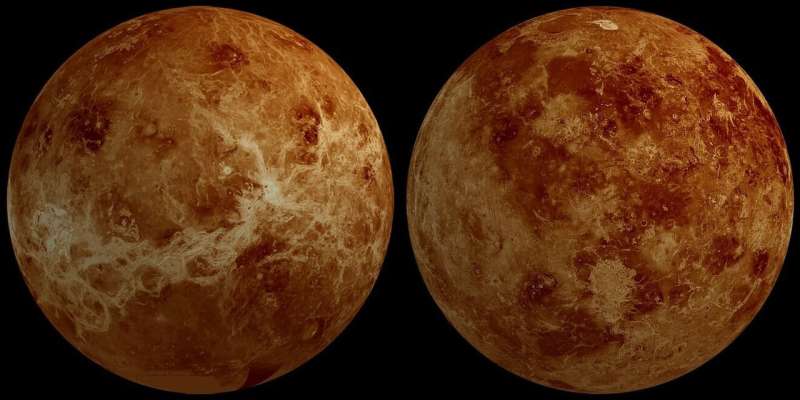
With multiple rovers landed and a mission set to return samples to Earth, Mars has dominated the search for life in the solar system for decades. But Venus has some fresh attention coming its way.
In a new report published today, a team led by MIT researchers lays out the scientific plan and rationale for a suite of scrappy, privately-funded missions set to hunt for signs of life among the ultra-acidic atmosphere of the second planet from the sun.
"We hope this is the start of a new paradigm where you go cheaply, more often, and in a more focused way," says Sara Seager, Class of 1941 Professor of Planetary Sciences in MIT's Department of Earth, Atmospheric and Planetary Sciences (EAPS) and principal investigator for the planned Venus Life Finder Missions. "This is a newer, nimbler, faster way to do space science. It's very MIT."
The first of the missions is set to launch in 2023, managed and funded by California-based Rocket Lab. The company's Electron rocket will send a 50-pound probe on board its Photon spacecraft for the five-month, 38-million-mile journey to Venus, all for a three-minute skim through the Venusian clouds.
Week in images: 6 - 10 December 2021
Friday, 10 December 2021 13:15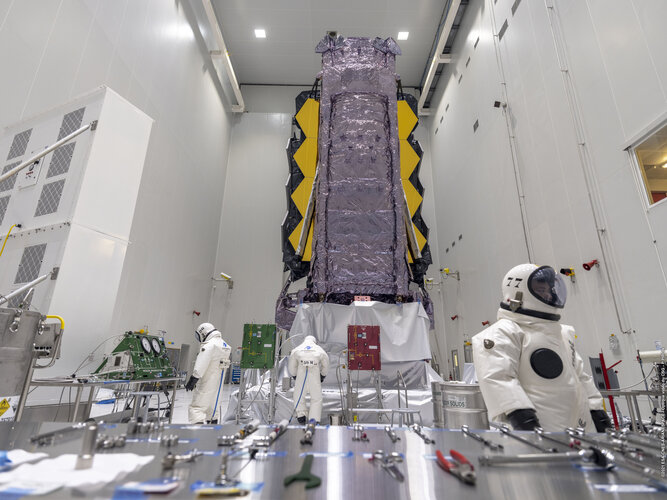
Week in images: 6 - 10 December 2021
Discover our week through the lens
Virgin Orbit adds Spire satellite to next launch
Friday, 10 December 2021 11:15
Virgin Orbit will fly a Spire cubesat in addition to several other payloads on its next LauncherOne launch, scheduled for no earlier than Dec. 22.
Successful and diverse harvest in darkness and eternal ice
Friday, 10 December 2021 10:31 Jess Bunchek, the NASA guest scientist at the German Aerospace Center (Deutsches Zentrum fur Luft- und Raumfahrt; DLR) EDEN ISS greenhouse, is nearing the end of her mission in Antarctica. Bunchek has been living and working as a member of the 41st overwintering expedition at the German Neumayer III Station, operated by the Alfred Wegener Institute, Helmholtz Centre for Polar and Marine Research
Jess Bunchek, the NASA guest scientist at the German Aerospace Center (Deutsches Zentrum fur Luft- und Raumfahrt; DLR) EDEN ISS greenhouse, is nearing the end of her mission in Antarctica. Bunchek has been living and working as a member of the 41st overwintering expedition at the German Neumayer III Station, operated by the Alfred Wegener Institute, Helmholtz Centre for Polar and Marine Research How TIMED Flies
Friday, 10 December 2021 10:31 Launched in 2001, NASA's TIMED mission has now spent 20 years surveying the complicated dynamics of Earth's upper atmosphere. Short for Thermosphere, Ionosphere, Mesosphere Energetics and Dynamics, TIMED observes the chemistry and dynamics where Earth's atmosphere meets space. On its 20th anniversary, the scientific community is reflecting on what they've learned from TIMED's two decades of oper
Launched in 2001, NASA's TIMED mission has now spent 20 years surveying the complicated dynamics of Earth's upper atmosphere. Short for Thermosphere, Ionosphere, Mesosphere Energetics and Dynamics, TIMED observes the chemistry and dynamics where Earth's atmosphere meets space. On its 20th anniversary, the scientific community is reflecting on what they've learned from TIMED's two decades of oper Mexico joins Artemis Accords
Friday, 10 December 2021 10:28
The government of Mexico announced Dec. 9 that it is signing the U.S.-led Artemis Accords outlining best practices for space exploration.
Contract signed to build Scout CubeMAP
Friday, 10 December 2021 09:07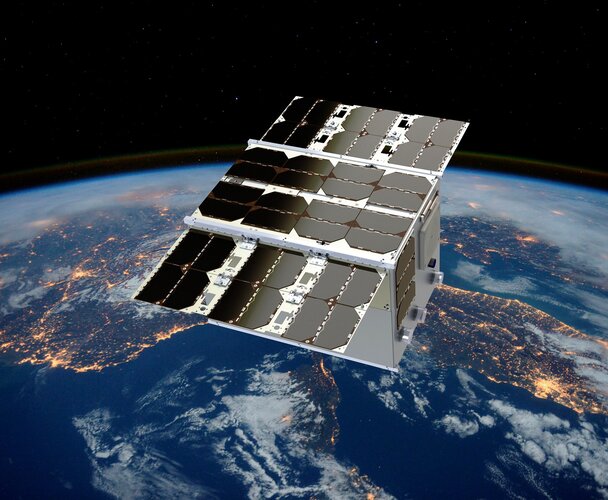
ESA has signed a contract with GomSpace to build the Scout CubeMAP mission. Embracing the concept of New Space, CubeMAP is a trio of nanosatellites to help quantify atmospheric processes in the upper atmosphere and how they impact our climate. The constellation will measure water vapour, carbon dioxide, methane, ozone, nitrous oxide and aerosols – all of which play a key role in the greenhouse effect and climate change.
Science with Webb: the nearby cosmos
Friday, 10 December 2021 09:00 Video:
00:00:57
Video:
00:00:57
The James Webb Space Telescope (Webb) is designed to answer fundamental questions about the Universe.
One of Webb’s key science goals is to study the nearby cosmos: uncovering hidden parts of our Solar System, peering inside dust clouds where stars and planetary systems are forming, and revealing the composition of exoplanets in more detail.
Exoplanets
Thanks to its powerful capabilities at infrared wavelengths, Webb will offer a unique view of the outer planets in our own magnificent Solar System. Looking beyond, Webb will study in detail the atmospheres of a wide diversity of exoplanets.
Webb can study exoplanets as
China sends classified Shijian satellites into orbit with milestone Long March launch
Friday, 10 December 2021 08:34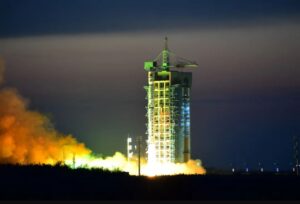
A Long March 4B launched the Shijian-06 (05) group of satellites Dec. 9, marking the 400th launch of China’s Long March family of launch vehicles.
Earth from Space: Fairbanks, Alaska
Friday, 10 December 2021 08:00
The city of Fairbanks, the largest city in the Interior region of Alaska, and its surroundings, are featured in this Copernicus Sentinel-2 image.
James Webb Space Telescope moved to meet its rocket
Friday, 10 December 2021 07:36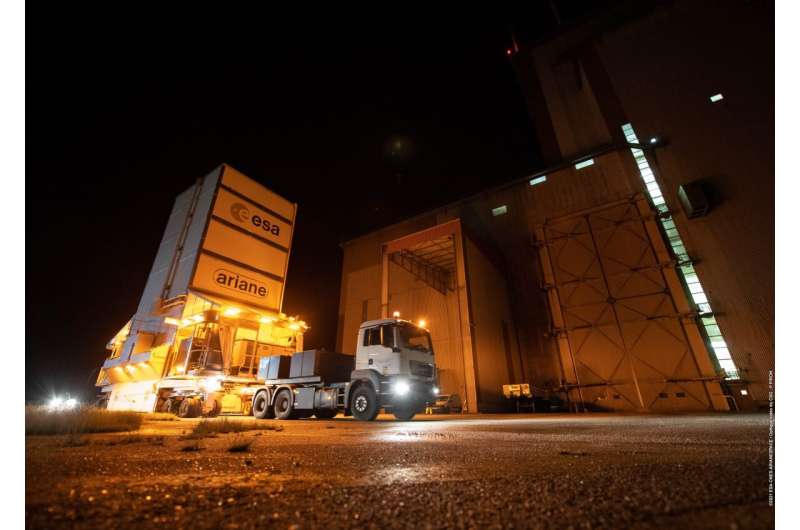
On Dec. 7, NASA's James Webb Space Telescope was transferred to the final assembly building at Europe's Spaceport in French Guiana to meet its Ariane 5 launch vehicle.
Stowed inside a special transport container and mobile clean room, Webb's vitals were meticulously monitored throughout the entire process of moving between buildings.
The Ariane 5 rocket Webb will ride to space was moved to the same building on Nov. 29. Here, adjustable platforms allow engineers to access the launch vehicle and its payload.
The next steps ahead are to safely lift Webb to an upper platform which has been prepared so that Webb can be connected to the Ariane 5's upper stage. After being connected to the rocket, technicians will move forward to encapsulate Webb inside Ariane 5's specially adapted fairing.
In preparation for a Dec. 22 launch, ground teams have already successfully completed the delicate operation of loading the spacecraft with the propellant it will use to steer itself while in space.
